an In-depth Look at Concentrated anImal feedIng OperatIons

Image Credits: Jo-Anne McArthur / We Animals
the farm IllusIon
Many of us are accustomed to thinking of farms as serene, placid, and peaceful settings. From a young age, children are taught to accept the illusion of farms as small family farms once were, with few animals, one or two farmhands, rolling green pastures, and a classic red barn that comfortably houses the animals, but this is a far cry from reality for the vast majority of the animals consumed today.
Industrial farming, which includes production practices, like enormous monocultures, rampant chemical and fertilizer use, and the raising of animals for meat, eggs, and dairy in confined, factory-like buildings, has enormous consequences on animal welfare, the environment, and human health in the United States and around the world. The conventional agriculture of today is far different from what most people believe it to be. Far from our predecessors’ direct link to the land, industrial agriculture is an industry about which consumers know very little and have very little contact. This disconnect between consumers and food production contributes to the social and environmental consequences of the food produced and eaten within this industrial system.
Despite the far-reaching consequences of industrial agriculture, few are aware of the realities of industrial agriculture, including how most animals are handled, reared, and slaughtered for food. These issues are rarely discussed among the general public, and even less attention is given to them by mainstream media outlets.
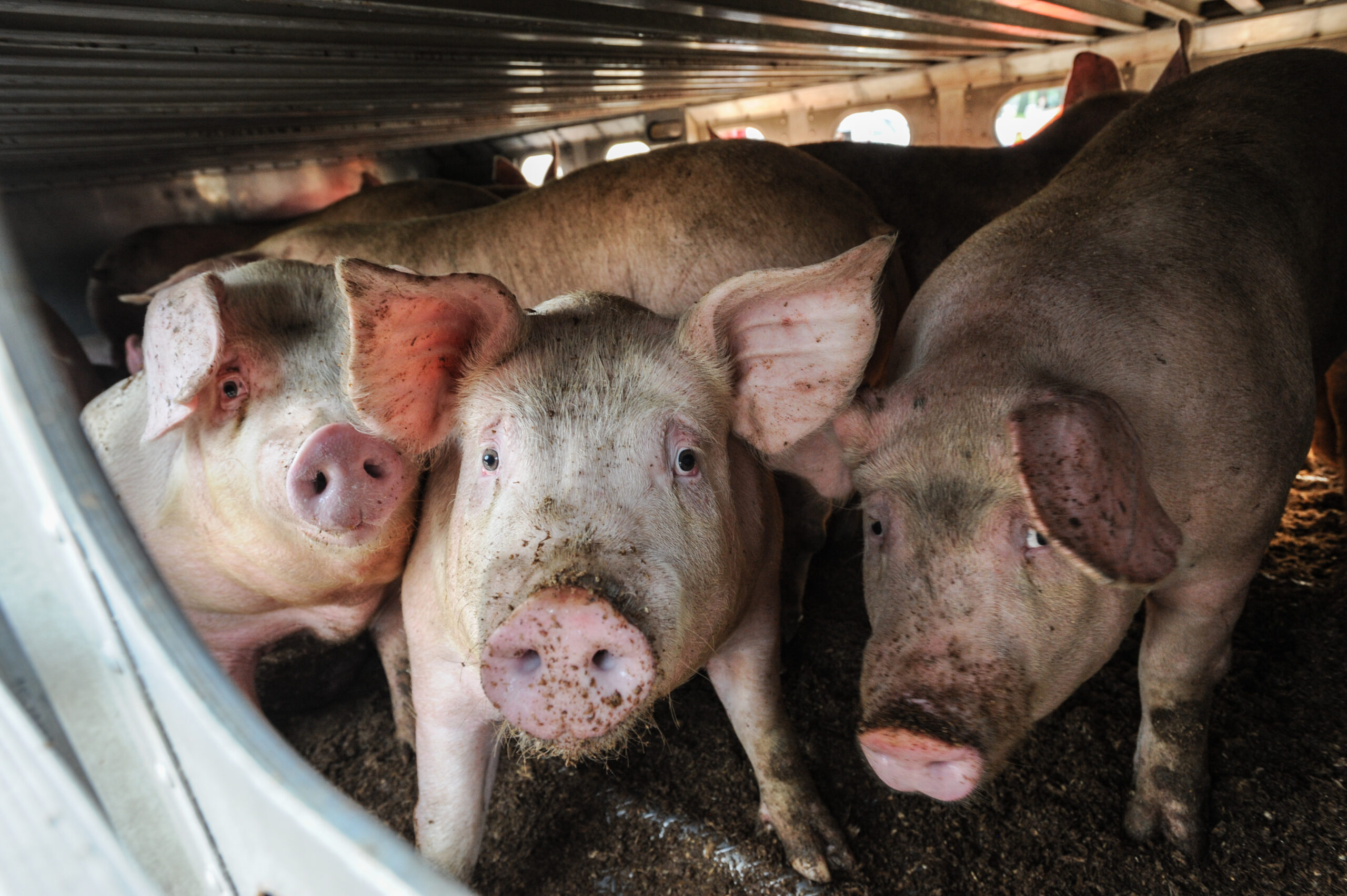
Image Credits: Jo-Anne McArthur / The Ghosts in Our Machine
where are the anImals?
Do you ever wonder why you don’t see many animals outside grazing when you drive in the countryside around Michigan or other midwestern states? Where are all of the animals that are raised and killed for food in this country? The answer lies in the ubiquitous industrial- looking buildings that now dot the landscape throughout the midwest. Low, flat, long buildings, often in rows, house thousands, and sometimes hundreds of thousands of animals in the case of chickens or egg-laying hens. Typically crammed into crowded sheds with thousands of other birds, where disease, trampling, and heart attacks are common, the birds live in miserable conditions, hidden from sunlight and green grass, and suffering ammonia burns from the filthy air, until they are loaded onto trucks to be slaughtered.
The vast majority of chickens, cows, pigs, and turkeys spend their lives on these massive “farms”, defined by government agencies as Concentrated Animal Feeding Operations (CAFOs), but often referred to as factory farms given their industrial design and appearance, not to mention the treatment of animals as production units without sentience. Inside these factory farms, animals are typically kept in crowded filthy sheds or cages, drugged to grow rapidly, and denied natural relationships and adequate veterinary care.
In a system that treats animals as “units” and commodities to make money, most animals on factory farms never get to take a breath of fresh air, and can’t do anything that is natural to them, like nurture their young or build nests. For example, mother pigs, known in the industry as sows, are kept in tiny, barren crates so small they can’t even turn around. They often develop open sores from rubbing against the bars and develop stereotypic behaviors, indicating extreme mental stress and despair. Cows are castrated, branded, and disbudded often without any painkillers.
In the egg industry, millions of male chicks are ground up alive or suffocated every year because the egg industry deems them unprofitable. Female chicks have portions of their sensitive beaks sliced off and are stuck in tiny cages for up to two years. The wire cages are so crowded most can’t even lift their wings.
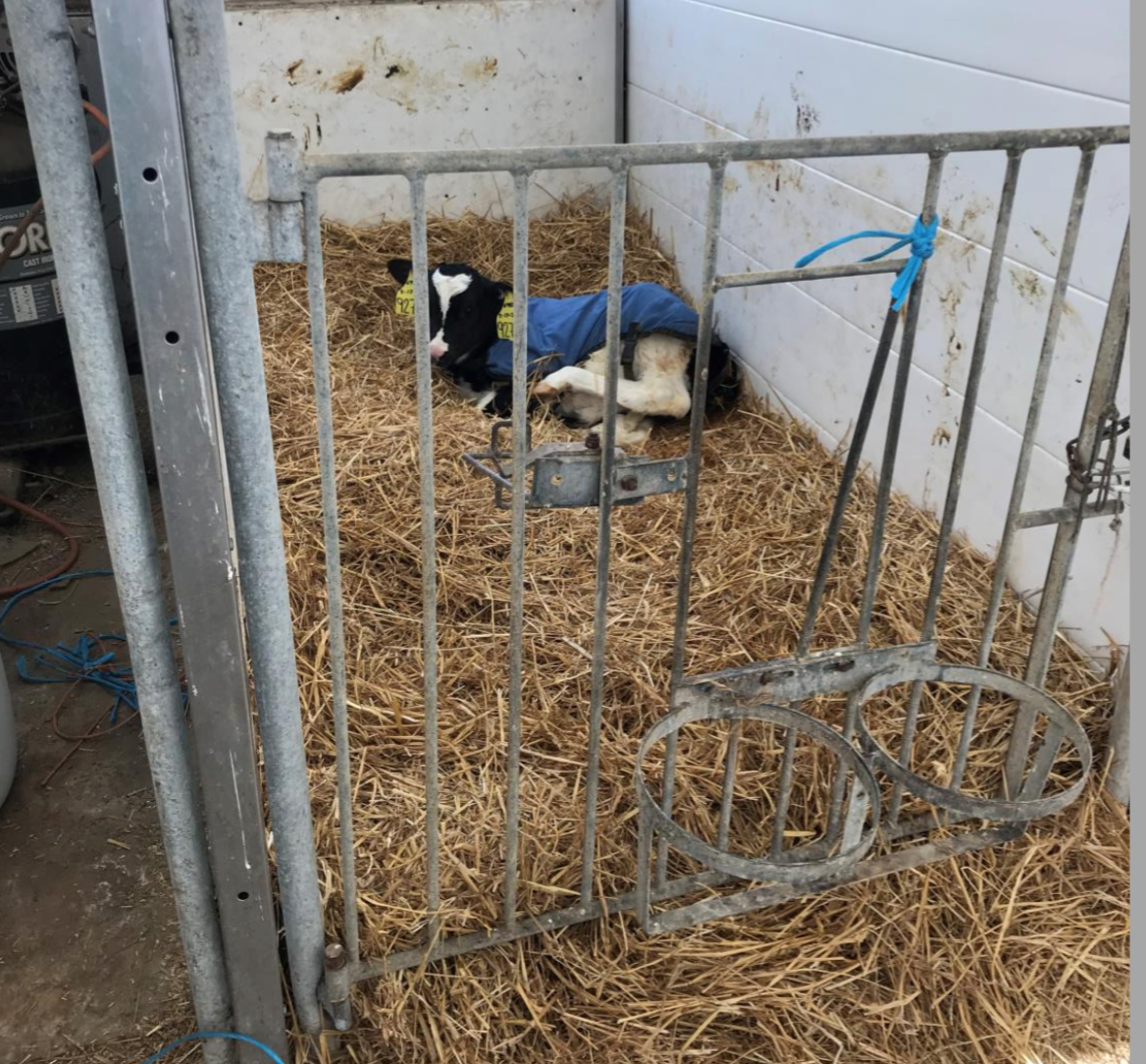
Image Credits: Michigan Department of Environment, Great Lakes, and Energy (EGLE)
The rISE Of THE CafO
Concentrated Animal Feeding Operations (CAFOs) are defined by the United States Department of Agriculture (USDA) as “more than 1000 animal units (an animal unit is defined as an animal equivalent of 1000 pounds live weight and equates to 1000 head of beef cattle, 700 dairy cows, 2500 swine weighing more than 55 lbs, 125 thousand broiler chickens, or 82 thousand laying hens or pullets) confined on site for more than 45 days during the year.” According to a recent report by the U.S. Environmental Protection Agency (EPA), there are more than 20,000 CAFOS in the United States. In Michigan alone, 272 CAFOs house more than 20 million animals raised for food.
The early 1970s saw the introduction of CAFOs along with an enormous amount of economic and technical changes. Since then, the number of farms raising animals has steadily decreased while the average number of animals per farm has consistently increased. Since World War II, the U.S. has been hugely productive in agriculture, producing more food per capita than anywhere else on Earth, and the average farm acreage increased from 147 acres at the beginning of the 20th Century to nearly 500 acres at the end of the century.
Customer apathy has increased as improved technologies further removed them from production practices. Today, customers see the neat little white package, free of blood or muscle, and neglect to connect the food production methods with the cheap and abundant foods. No other society is as removed from the animals they eat as in the western world. The USDA states that at the beginning of the 20th Century, 35 percent of the U.S. workforce was directly involved in agriculture and food production. A century later, less than 3 percent of the population is involved in food production. Many studies show these trends continuing to decrease over time due to shrinking rural populations and growing urban populations in both the U.S. and Europe.
how are cafos regulated?
CAFOs produce numerous environmental hazards, including massive amounts of manure and slaughter waste, intensive water use, and pollution to water, air and the land. Animal agriculture is also a leading contributor of greenhouse gas emissions.
CAFOs are mainly regulated by two environmental laws; the Clean Water Act of 1972 and the Clean Air Act of 1970. Many environmental problems, including the lawsuit recently brought against Slater Farms by Michigan Attorney General Nessel, fall under the National Pollutant Discharge Emission System (NPDES) permit violations under the Clean Water Act. In Michigan, and elsewhere, the federal government began requiring that CAFOs apply for and obtain an NPDES permit in 2003 in a rule known as the CAFO rule. And while that may seem like a good thing at first glance, the permit only stipulates the quantity of manure and other pollutants that are allowed to be discharged to waters of the United States – it doesn’t stop the discharges or prevent these facilities from releasing into state waters. Further, it does nothing to address air emissions and nuisance complaints from nearby residents.
The 2003 rule requiring CAFOs to obtain permits was challenged in Water Keeper et al. vs. the EPA, and “the court directed the EPA to remove the requirement for all CAFOs to apply for NPDES. Instead, the court required that nutrient management plans be submitted with the permit application, reviewed by officials and the public, and the terms of the plan are incorporated into the permit.” The final CAFO rule in 2008, and the one that still applies today, requires only CAFOs that actually discharge or propose to discharge waste apply for an NPDES permit. This is why despite more than 450,000 total animal feeding operations (AFOs) in the U.S., only 20,000 of them are classified as CAFOs and fewer than ⅓ of those are required to have a discharge permit. Under the permit, CAFOs must “identify ways to treat or process waste in a way that maintain[s] nutrient levels at the appropriate amount.” These plans are known as Comprehensive Nutrient Management Plans (CNMPs).
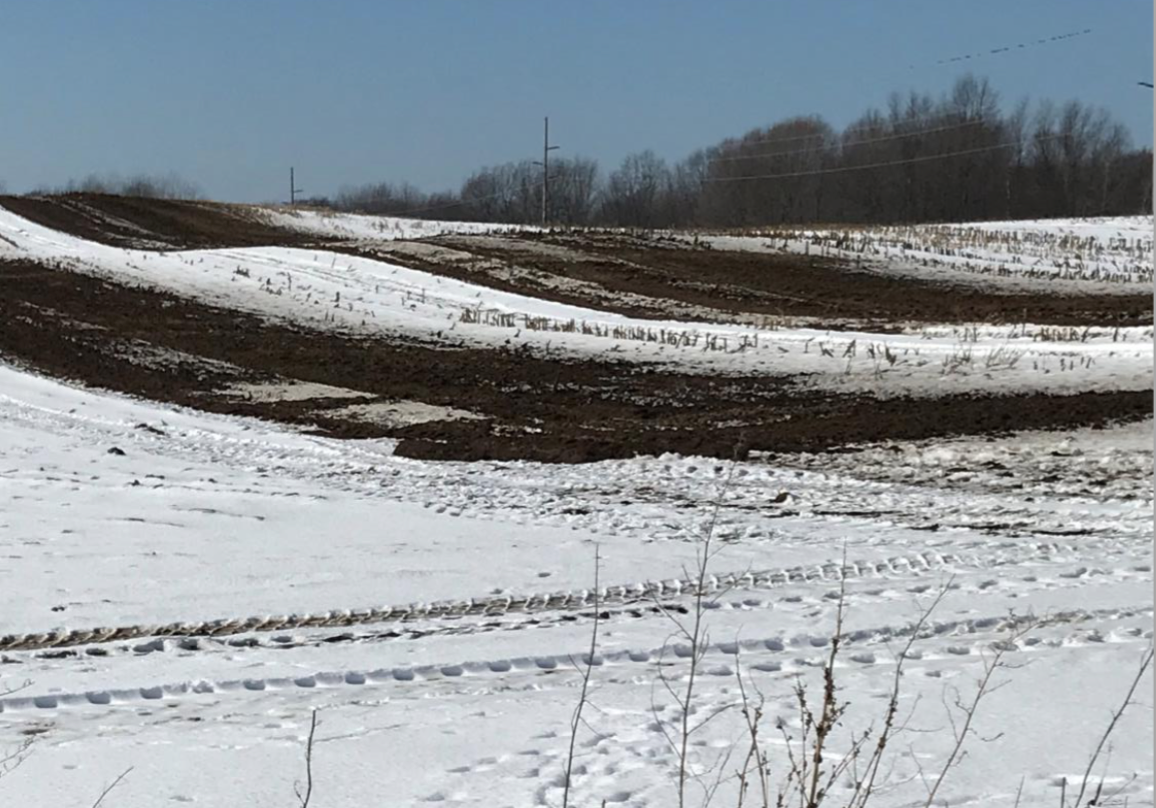
Image Credits: Michigan Department of Environment, Great Lakes, and Energy (EGLE)
the waste problem
As one can imagine, housing animals in massive quantities in confined housing produce staggering amounts of manure. According to The Sierra Club, even the smallest of CAFOs can produce waste amounts equivalent to the size of a small city, yet no wastewater treatment plant is required. For example, one 1400 pound cow produces nearly 18 gallons of manure each day and with hundreds or thousands of animals on one farm, the waste produced is a massive problem. According to a 2010 report by the Centers for Disease Control (CDC), “ livestock animals in the U.S. produce each year somewhere between 3 and 20 times more manure than people in the U.S. produce, or as much as 1.2–1.37 billion tons of waste. Though sewage treatment plants are required for human waste, no such treatment facility exists for livestock waste.”
As a result of the large volume of animal waste produced, manure is generally stored in concrete pits, commonly referred to as “lagoons,” on-site where spills and leaks are typical. Manure is also “land applied” to the soil as fertilizer, but this vast manure output often overwhelms the soil’s ability to absorb it and as a result, ends up running off into nearby lakes and streams causing toxic algal blooms and polluting groundwater and drinking water. This is particularly problematic when manure is land applied when the ground is frozen. Storage lagoons are also problematic as common sources of contamination when they’re filled too high or there is a leak, causing e.coli bacteria contamination, algal blooms, such as the high profile one that causes Lake Erie to turn green each summer, and other outbreaks connected to large-scale fish kills and national beach closings.
According to Michael Pollan, author of The Omnivore’s Dilemma, prior to CAFOs, small farms fed their animals waste products from their crops, and in turn, the animal waste was spread back onto crops in an “ecological closed loop system” that virtually eliminated waste. Ironically, today’s industrial agriculture facilities are dealing with how to handle the mass amounts of waste produced, while adapting animals to eating grain instead of grass, and at great cost to both the environment and human health, largely because this system produces the cheapest calories available.
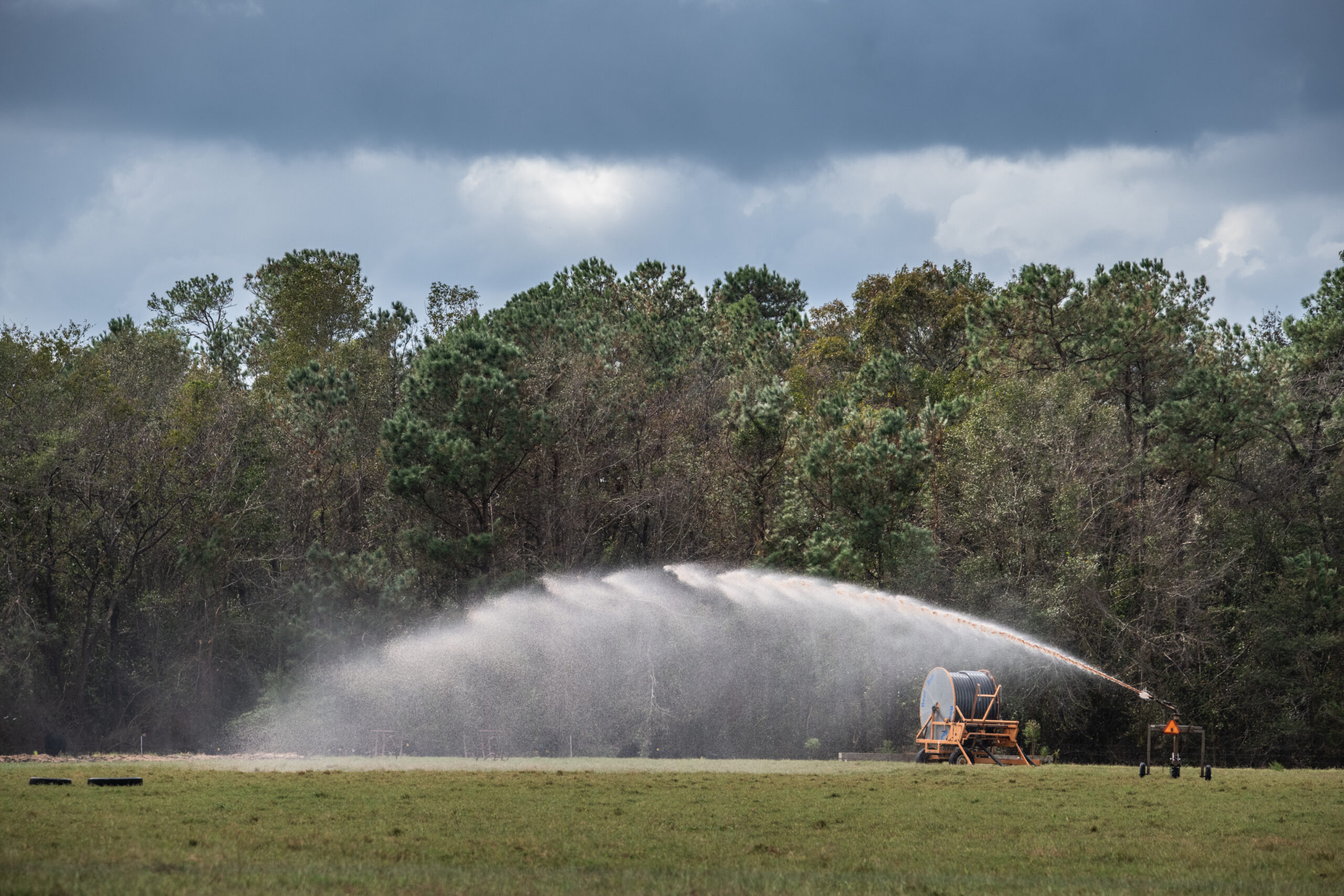
Image Credits: Jo-Anne McArthur / We Animals
aIr qualIty woes
CAFOs are also known to be significant contributors to greenhouse gas emissions, such as methane, nitrous oxide, and carbon dioxide, according to the EPA. Particulates from operations often affect air quality in nearby towns and odors are a major concern among nearby residents, as witnessed by the Sierra Club in many U.S. states. “One study found that 82.8% of those living near and 89.5% of those living far from CAFOs believed that their property values decreased, and 92.2% of those living near and 78.9% of those living far from CAFOs believed the odor from manure was a problem.”
In addition to methane, air pollutants surrounding CAFOS typically include ammonia, hydrogen sulfide, and particulate matters, all of which contribute to adverse health effects – from asthma and chronic coughs to respiratory inflammation and lung disease. In fact, the number of asthma cases near CAFOs is often much higher than average, especially in children.
NuIsance and Odor ComplaInts
Odor complaints are extremely common in areas surrounding CAFOs, but unfortunately, many of these nuisances are covered under the guise of “generally accepted agricultural management practices”, or “necessary evils” that are unavoidable with the routine practice of farm management. In one recent example, an Indiana couple took their nuisance case all the way to the U.S. Supreme Court, only to have it rejected based on the state’s “Right to Farm” law. The couple filed suit along with other neighbors in 2015, two years after an 8,000 hog CAFO began operating adjacent to their property. They claimed, “ odors from the farm made being in their homes unbearable and made their throat and eyes sting, and reduced the value of their homes. In other words, it constitutes a nuisance”. Nearly every state has some version of a “right to farm” law that protects big agricultural operations and CAFOs from lawsuits, and some have begun making it even more difficult in recent years, by restricting who can sue even though complaints of odor, ill health, and decreasing property values abound. Watch this brief video, Living a Nightmare, to hear directly from residents in Michigan about what it’s like to live near these facilities. For a more in-depth look at the problems experienced by residents who live near CAFOs in Jackson, MI, and Montague, MI, check out Sierra Club’s 2018 short documentary, Right to Pollute: Factory Farms in Michigan.
protectIng polluters
As in Indiana, here in Michigan, the state’s Right To Farm Act was enacted in 1981. Under this act, farmers, including CAFO operators are “encouraged” to follow “best practices” called Generally Accepted Agricultural Management Practices, otherwise known as, GAAMPS. This set of guidelines and best practices are administered by the Michigan agricultural commission, and generally afford farmers and CAFO operators “a certain level of protection if a nuisance complaint is filed against them”, rendering it nearly impossible for citizens and nearby residents the ability to protect their health, and the health of their neighbors, and property values in court. The Michigan Farm Bureau, a lobby organization for farmers, summed it up best:
“If you are following all of those GAAMPs, what you get is protection from nuisance lawsuits. If somebody files a complaint to say, ‘This farm stinks,’ or ‘I’m seeing something wrong,’ depending on the nature of the complaint, the Michigan Department of Agriculture will come out and investigate, and if the farmer is following all of these GAAMPs, the ag department will say you’re doing nothing wrong. They’ll dismiss the complaint if they see the person is following all of those GAAMPs.”
Further protecting “farmers” and CAFO operators, in 2002, the Federal Farm Bill established assistance for farmers to voluntarily stay compliant with federal, state, and local laws specifically related to the environment, while remaining economically viable. This program is known as EQIP or the Environmental Quality Incentives Program. The program actually subsidizes these large-scale farming operations to keep them as compliant as possible with environmental regulations. Instead of working to solve the problem as a whole, it has allowed CAFOs to operate within the status quo, but with what appears to be more stringent environmental enforcement. While it may appear to solve one problem, in all actuality it does very little to protect the environment or public health, and in fact, it continues to drive the smaller-run family farms out of business since it is difficult to compete with those facilities that boast lower prices and more product while also remaining compliant with environmental regulations. Furthermore, it does nothing to address the animal welfare issues that are prevalent within these facilities.
This tends to lead to frustration with the environmental sector among those concerned with animal welfare in CAFOs since it continues to allow these industries to operate unscathed. Instead of working to ward off further progress by these giant farms, many environmental organizations and agencies are helping these farms stay in business, and even continue to grow, by subsidizing methods to bring them into compliance with environmental regulations. These groups have found ways to bypass a complete change in the industry and instead help them to continue the methods they have grown accustomed to. Examples of this include; permitting discharges at certain times according to weather and time of year, requiring the submittal of best management practices in a comprehensive nutrient management plan (CNMP), introducing a volume cap on discharges, and creating certain structural requirements and land application rates, each of which are methods that the Michigan Department of Environment, Great Lakes, and Energy (EGLE) uses to regulate factory farms. While these can be a minor improvement, especially in terms of environmental consequences, they fail to consider the larger picture.
In Michigan, the focus on its 272 CAFOs statewide has largely been environmental. For instance, Michigan’s chapter of the Sierra Club, the Mackinac Chapter, has worked to increase awareness of the effects of Confined Animal Feeding Operations on the environment. In 2001, the Mackinac Chapter began extensive water quality testing in parts of Lenawee County near various CAFO sites with the start of the Water Sentinels program, which relies heavily on concerned citizens and volunteers. Test results raised concerns over contaminated runoff from liquid manure from CAFOs, specifically dairy CAFOs in Lenawee County. The Water Sentinels program has attracted statewide media attention to the environmental issues associated with factory farms.
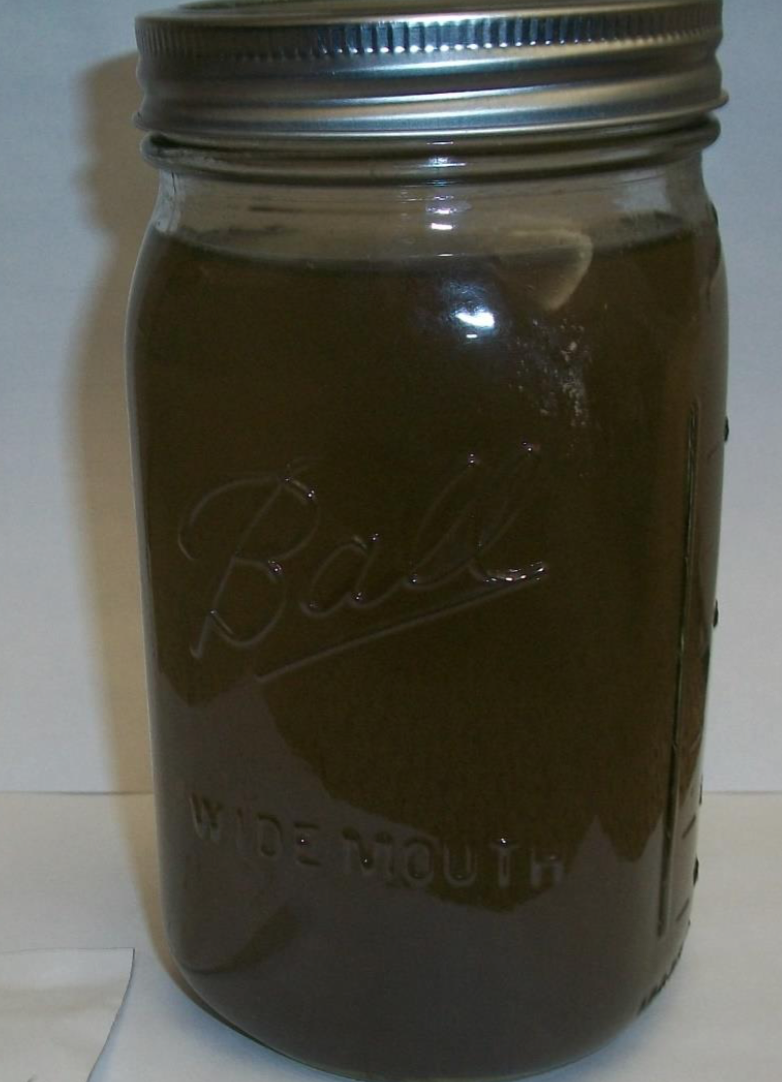
Image Credits: Michigan Department of Environment, Great Lakes, and Energy (EGLE)
anImal agrIculture Is resource IntensIve
Animal agriculture is responsible for the use of vast amounts of water, land, and energy. It takes enormous amounts of water to grow crops for animals to eat, clean filthy factory farms, and give animals water to drink, all to produce meat. One individual who eats a vegan diet can save 219,000 gallons of water a year, according to National Geographic. Eating meat wastes valuable resources. It takes up to 13 pounds of grain and 2,500 gallons of water to produce just a pound of meat, and much of that could be used directly to feed people. And it takes 11 times as much fuel to produce a single calorie of animal protein as a calorie of plant protein. A 2014 study found that just by going vegan you can reduce the amount of greenhouse gases your diet contributes to climate change by up to 60 percent.
According to the Institute for Water Education, choosing a 1/3-pound veggie burger made from soybeans instead of a 1/3-pound beef burger saves 579 gallons of water—more than the average American uses indoors in an entire week! Even the United Nations has acknowledged that a global shift toward diets free of meat and dairy is necessary to combat the worst effects of climate change.
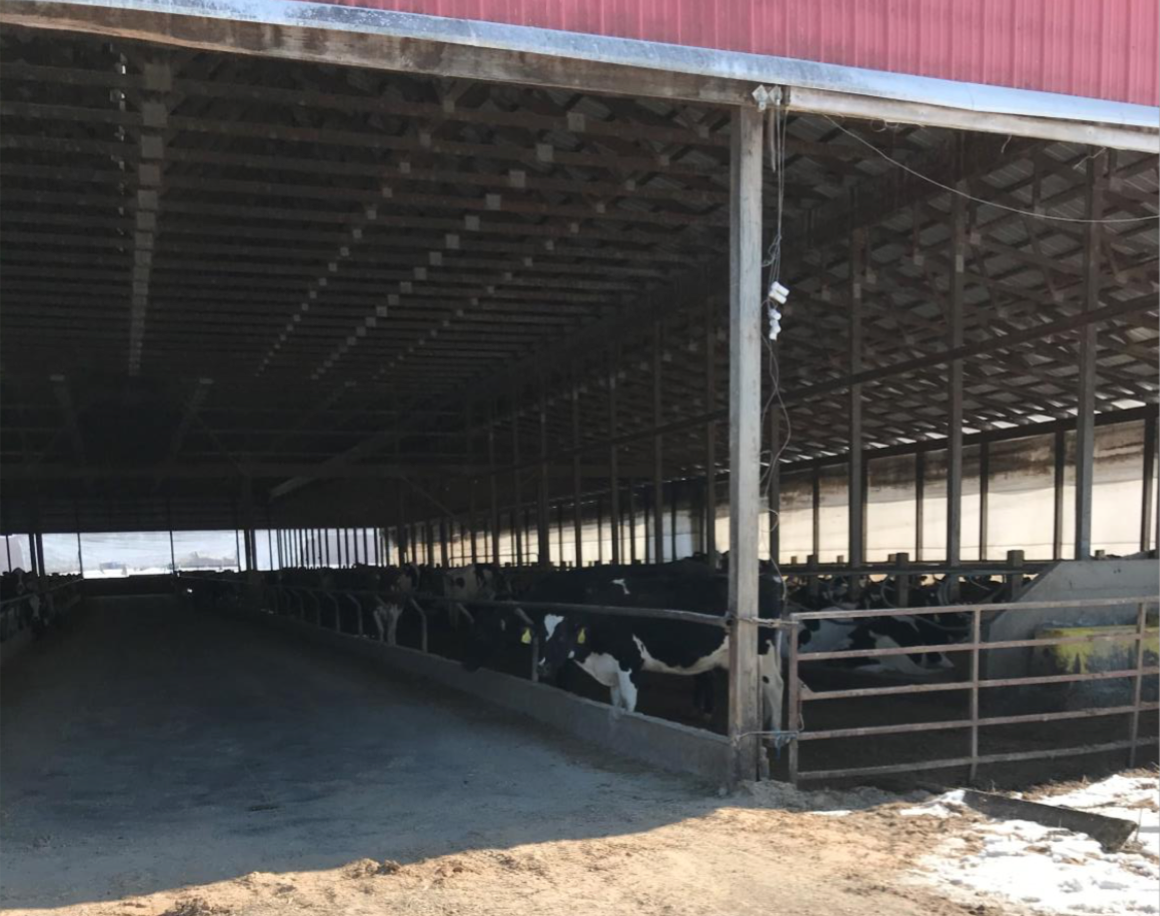
Image Credits: Michigan Department of Environment, Great Lakes, and Energy (EGLE)
The Case In MIchIgan
In the Slater Farms case, the CAFO houses more than 1,500 dairy cows and 400 cattle on four different parcels of land in Holton Township, Denver Township, and Sheridan Township. The CAFOs produce 1,500 tons of solid waste and 8.9 million gallons of liquid waste annually, per the state press release. Further, Slater Farms also disposes of approximately 10.7 million additional gallons of liquid waste from another commercial farm. Because of this improper storage and disposal, nitrogen, phosphorous, and E.Coli have been found in the White River watershed, damaging soil quality, causing fish kills, and contributing to toxic algae blooms.
The tImelIne
The issue was first brought to the state’s attention by a citizen complaint back in 2012. The complaint alleged that land-applied manure was leaking into Brayden Creek in Newaygo County in western Michigan. Upon investigation, the state determined that the CAFO had been operating without an NPDES permit and also not properly handling the waste, but the state negotiated an agreement with Slater Farms in 2013 under an administrative consent order (ACO). This order established a timeline for the CAFO to apply for a permit and come into compliance. Initially, Slater Farms complied with most of the requirements, with the exception of two: 1) to modify its current “silage pad runoff transfer system” with a pump that would ensure a 24 hour/25 year storm event detention capacity and 2) “design and construct a new waste storage structure.” These obligations were required to be complied with by March 2013 and November 2014, respectively. Slater Farms claimed it needed to complete the latter requirement before the former and asked for an extension in November 2014. The state granted the extension in February 2015 giving the CAFO until November 2015 to comply. Slater Farms asked for yet another extension late in 2015 and was given another year to comply, this time until November 2016. Under the ACO, Slater Farms agreed to pay a fine of $100 per day for each day it failed to comply with the order, meaning Slater Farms owes the state $5,400 in violation fees of which less than half has been remitted.
In December 2015, Slater Farms submitted a CNMP and permit application to the state, at which time the state discovered Slater Farms was still using an improper waste storage structure. In May 2017, the state once again inspected the CAFO and found that not only did the CAFO not build a new storage structure or modify its silage pad with a pump, as previously required, it also found additional violations, including the stockpiling of manure on four different fields, land applying waste on unapproved fields, failure to “incorporate” the waste within 24 hours of applying it, failure to maintain records of daily and weekly inspections, and failure to maintain waste storage structures. In October 2019, the state requested that Slater Farms submit an updated application and CNMP, which was never done. In response to numerous additional citizen complaints in May 2019, December 2019, and January 2020 regarding the stockpiling of manure and odors, the state issued a violation notice to Slater Farms in January 2020. With no response to the violation notice, the state then conducted two additional inspections of the CAFO in February 2020, finding the same violations that were discovered in the May 2017 inspection. A March 2020 violation notice was sent and though this time Slater Farms responded to the notice, the CAFO was still not in compliance. The lawsuit was filed after the state says Slater Farms still hasn’t fully complied with the laws, including unlawful discharges, breach of contract, and failure to obtain a permit. For failing to comply with the original two requirements, Slater Farms now owes more than $350,000 in stipulated penalties and the penalties continue to accrue at $100 per day.
The Michigan Attorney General’s Office has also asked the court to order the farm to follow the permit requirements, reapply for a new permit, stop unlawfully discharging animal waste into the watershed, update its waste storage structure, pay about $957 in overdue permit fees, pay civil fines of between $2,500 and $25,000, and pay some $355,200 in penalties for failing to follow the rules. Click here for the entire complaint and to view the violation notices.
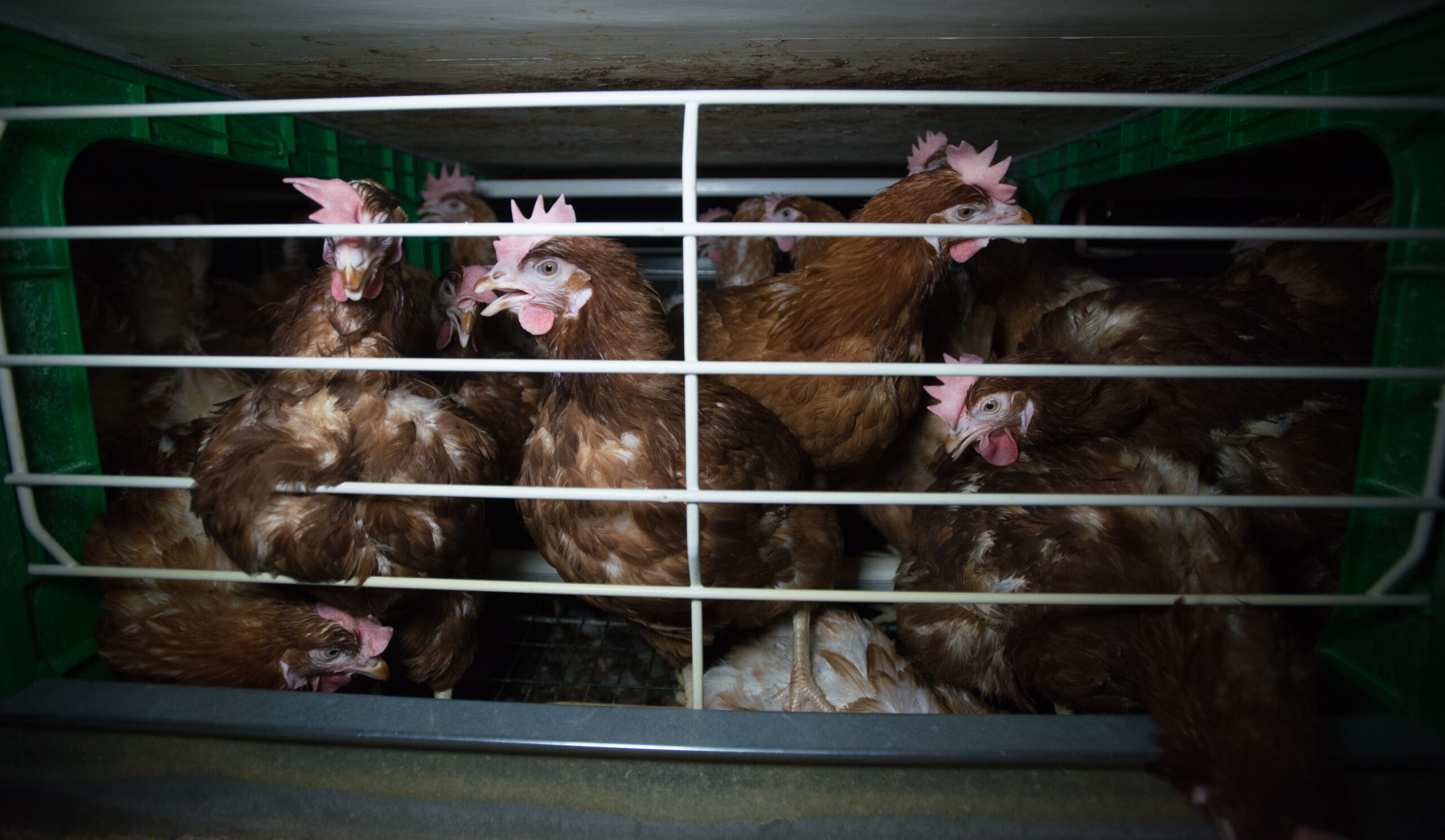
Image Credits: Jo-Anne McArthur / Animal Equality
SubsIdIzIng Cheap Meat
The largest obstacle lies in the fact that citizens either do not know, or do not care, about what is happening in CAFOs all over the country, and until they oppose these farms in sufficient numbers and begin to hold the industry and the government accountable, change is highly unlikely. This is much easier said than done, given the fact that government and private industries introduced CAFOs to America in the first place, and thus are highly invested in seeing them grow. For this, and other reasons, governments have fostered CAFO-friendly policies at the public’s expense. In addition, many people are very ingrained in the notion that animal products are a necessity in any diet and are wary of any recommendations that seek to change that. According to the World Watch Institute, the three aspects that have made diets high in animal flesh so popular are today’s expansive global trade and advertising, shockingly low meat prices, and increased urbanization. A staggering 219 pounds of meat are consumed on average per person in the U.S. The price of beef has fallen to about 25 percent of what its value was in the 1970s, mainly because the number of livestock has increased dramatically, from an average of 3.1 billion to more than 4.3 billion throughout the world.
It is obvious that an agriculture system that deprives animals of its natural behaviors and tendencies also tends to unfairly treat farm laborers, threaten public health through pollution and antibiotic use, and even destroy the economy of rural communities through tax subsidies and denial of other economic development possibilities. Animal factories are largely controlled by corporations with little interest in their host communities.
One continuous problem is that the true cost of factory farming is not apparent in the price people pay upon purchasing it. Journalist Mark Winne declares that U.S. shoppers spend less on food as a percentage of their total annual expenditures than anyone else in the world. According to Winne, “[t]his is because factory livestock farms—labeled “concentrated animal feeding operations” (CAFOs) by government agencies—don’t pay for the natural resources they have squandered, the farm labor they have maltreated, the declining health of residents who live near their operations, or the animals that have been exploited far beyond their biological capabilities.” The low prices that consumers pay for meat further the problem by hiding the true environmental, public health, and animal welfare costs of raising meat in CAFOs.
Eat plant-based foods
Barring a major change in legislation prohibiting or severely restricting CAFOs, the single biggest change individuals can make is to eat fewer animal products, including meat, dairy, and eggs, and turn to plant-based foods instead. If more people chose to eat fewer and fewer animal products, we could see a massive shift in greenhouse gas emissions that contribute to global warming and drive demand for CAFOs down in the process. A recent study in the journal, Science, concluded that “a nearly complete switch to a plant-rich diet around the world could slash almost 720 billion tons of greenhouse gases” and “if the world food system keeps on current trajectories, it will produce near 1.5 trillion tons of greenhouse gases over the next 80 years.”
For help incorporating more plant-based foods into your diet, check out one of VegMichigan’s free virtual presentations here and our YouTube channel for great recipe ideas.
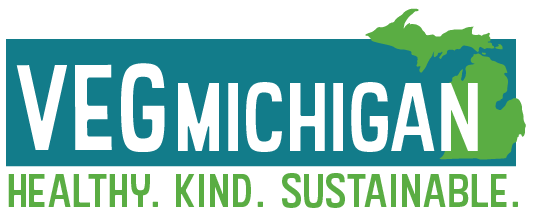
I believe that if more consumers really knew what goes on in factory farms and slaughterhouses, there would be many more vegetarians and vegans in the world.
Thanks to being educated by PETA about the issues of animal cruelty on factory farms, I no longer eat meat, wear down or wool, or buy leather. I am slowly working toward a completely vegan diet. I try to raise awareness of these problems with family and friends but many people prefer not to think about it.
This article was extremely helpful in explaining the environmental problems caused by CAFOs. Thank you.
We just wanted to take a moment to acknowledge all the hard work and effort you’ve been putting in lately. Keep up the amazing job, you’re doing great!
I just wanted to take a moment to say how much I appreciate your blog posts. They’re always well-written, informative, and keep me coming back for more. Keep up the great work!
Every time I read one of your posts, I come away with something new and interesting to think about. Thanks for consistently putting out such great content!
Thanks, Emmalee! We are happy to hear our articles are meaningful and making an impact!